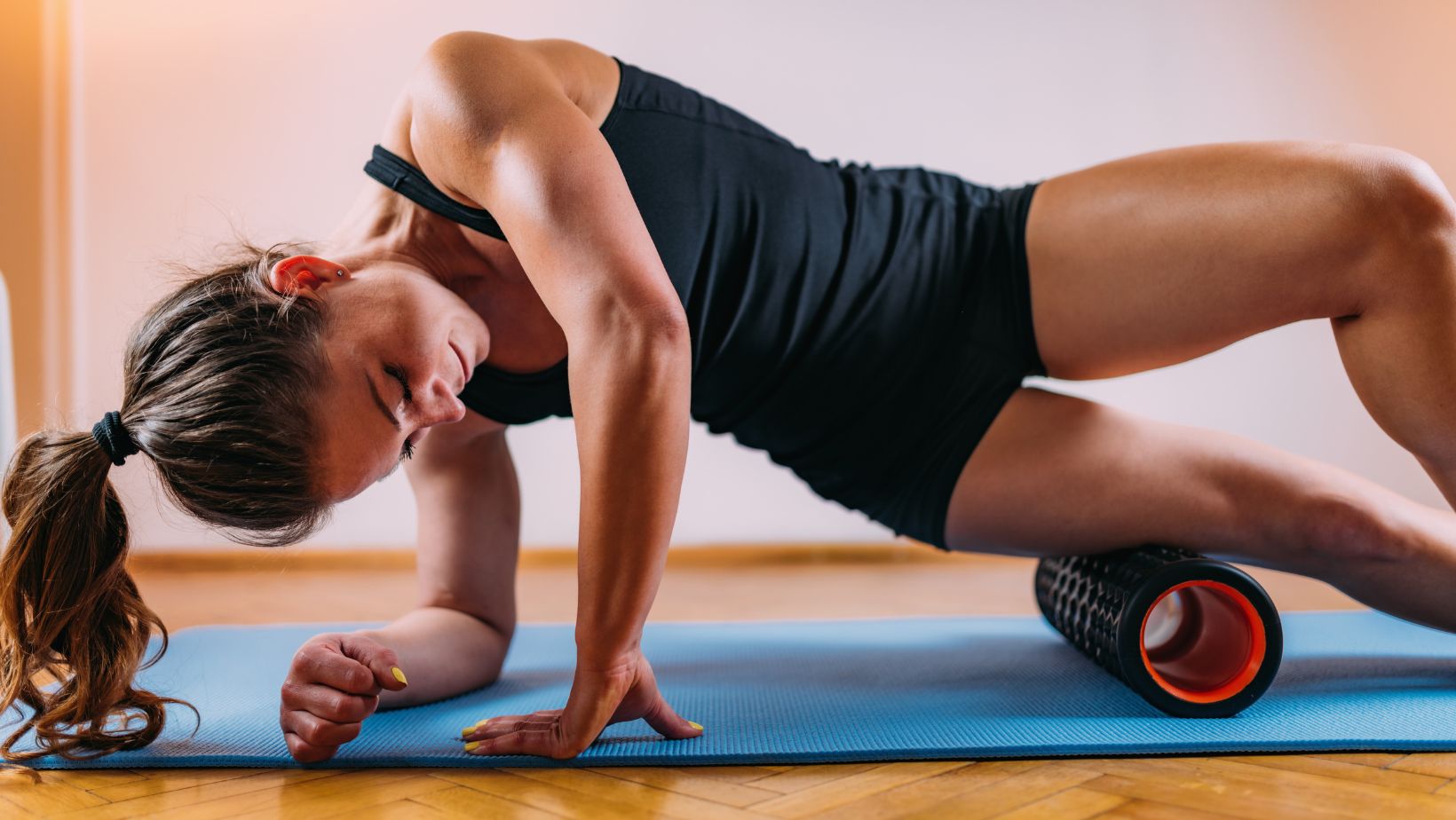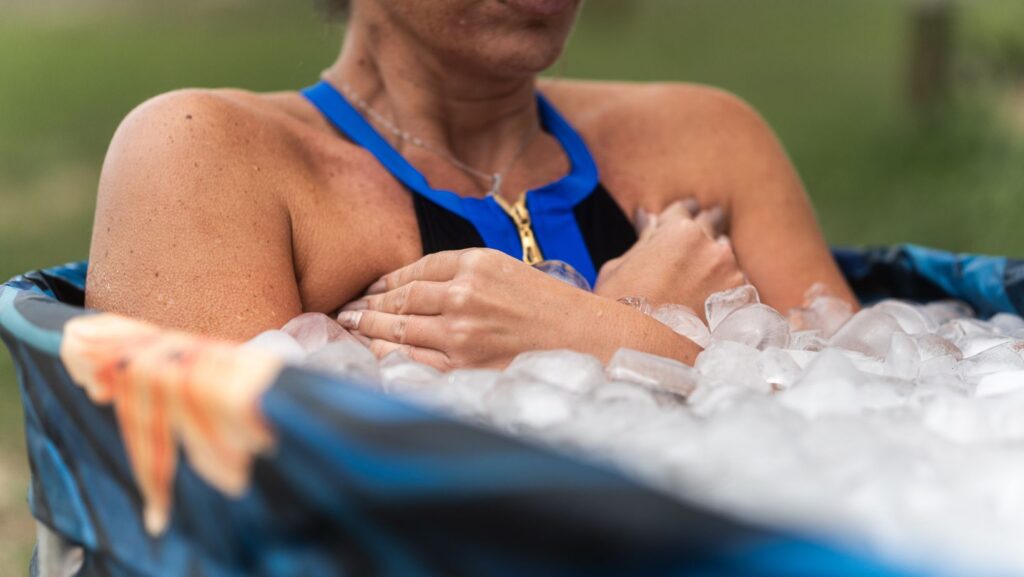That familiar post-workout sensation hits you like clockwork. Muscles screaming for mercy, mind racing despite physical exhaustion, and tomorrow’s commitments already casting shadows over today’s accomplishments. Sound familiar? The fitness world has long celebrated the grind, but today’s sports medicine experts and elite coaches are shifting their attention toward something equally vital: strategic recovery.
Between workouts is where the magic happens. Your muscles don’t strengthen during exercise—they rebuild and adapt during rest periods. Let’s explore recovery approaches that genuinely work, blending time-tested methods with cutting-edge research for better athletic performance and longevity.
1. Cold Therapy: Beyond the Ice Bath Hype
Cold water immersion has transcended sports clichés, becoming a cornerstone of evidence-based recovery. Research in exercise physiology shows cold exposure after workouts can noticeably decrease inflammatory responses, though results vary between individuals, and timing makes a crucial difference.
Cold exposure creates something of a circulatory pump effect. As tissue chills, blood vessels narrow, then expand again during rewarming. This contraction-expansion pattern may help flush inflammatory byproducts from worked muscles.
Start with brief 30-60 second dips in water around 50-59°F, building tolerance gradually over weeks to reach 10-15 minute sessions. Not ready for full immersion? Targeted cooling of specific muscle groups—like ice packs on quads after leg workouts—still delivers meaningful relief.
Temperature tip: No access to specialized cold tubs? Create your own ice bath, but add ice AFTER you’re already sitting in cool water. The progressive temperature drop feels far less shocking than plunging directly into icy water.
2. Strategic Cannabinoids: Beyond CBD
While CBD became a recovery staple in recent years, the broader spectrum of cannabinoid applications now shows promise in sports medicine circles. Ongoing research continues exploring how THC interacts with our endocannabinoid system, which helps regulate pain perception, inflammatory responses, and sleep cycles—all crucial recovery elements. A 2021 review published in sports physiology journals highlighted cannabinoids’ potential recovery benefits while noting the need for more targeted human trials.
Athletes across various disciplines have begun incorporating fully legal, yet potent THC gummies into their recovery protocols, particularly following high-intensity training days. These specialized formulations balance cannabinoid ratios specifically to reduce inflammation and promote muscle relaxation without next-day mental fog.
“My sleep quality changed dramatically,” reports Jordan, a D1 track athlete who added cannabinoids to his recovery regimen. “After evening workouts, I’d lie awake for hours. Now I’m logging an extra hour of deep sleep according to my fitness tracker.”
Timing and dosage require personalization. Products containing balanced CBD:THC ratios (within legal limits) taken 1-2 hours before sleep may enhance recovery without morning grogginess that would interfere with training.
Dosage advice: First-timers should start with half the recommended amount of any balanced CBD:THC product. Experienced athletes often look for products containing terpenes like myrcene and linalool, which research suggests have additional muscle-relaxing properties.
3. Foam Rolling: Target Fascia, Not Just Muscle
That foam cylinder gathering dust in your corner deserves another chance. Multiple studies in physical therapy journals show just 2 minutes of purposeful foam rolling can boost joint mobility by 10-16% and substantially reduce post-workout soreness when done regularly.
Most people miss the mark with technique, though. The real benefits come from addressing fascia—the connective tissue surrounding muscle groups—rather than simply rolling across muscle bellies. Finding trigger points (those tender spots that make you wince) and applying steady pressure for 30-45 seconds yields dramatically better outcomes than quick, haphazard rolling.

Your results will depend heavily on roller density and texture. If you’re new to this, begin with medium-density smooth rollers before graduating to textured versions with nodules that reach deeper tissues.
Rolling rhythm: Move at a glacial pace—no more than one inch per second—and breathe deeply when you hit tight spots. If discomfort exceeds 7/10 on your personal scale, reduce the pressure slightly. The goal isn’t pain but release.
4. Contrast Therapy: Temperature Training for Recovery
When choosing between hot and cold treatments, sometimes both together outperform either alone. Contrast therapy—systematically alternating between heat and cold—delivers impressive recovery advantages through what therapists call “vascular pumping.” Research in exercise science journals indicates that switching between warm (around 104°F) and cool (around 50°F) water creates circulation patterns that help clear metabolic waste from fatigued muscles.
The most effective protocol typically involves 3-4 rounds of temperature contrasts: 3-4 minutes in heat followed by 1 minute in cold. This rhythmic temperature shifting boosts blood circulation to worked muscles, helps clear metabolic byproducts, and addresses inflammation more effectively than single-temperature approaches.
No specialized contrast bath access? Simply alternate between hot and cold shower settings for a simplified version that still delivers benefits.
Finishing sequence: End your contrast cycle with cold rather than heat. Closing with cold leaves tissues slightly constricted, which naturally limits inflammation during the critical early recovery window.
5. Compression: Pressure Creates Precision
Once considered mostly placebo, compression garments have earned legitimate scientific credibility. Recent systematic reviews show wearing properly fitted compression gear for 12-48 hours after intense exercise can measurably decrease muscle soreness and accelerate strength recovery.
How does it work? External pressure limits available space for swelling while supporting circulation that removes exercise byproducts from muscle tissue. Today’s technology has evolved far beyond basic compression socks.
Modern graduated compression targets specific muscle groups with variable pressure zones—higher compression at extremities gradually decreasing toward the heart—a pattern enhancing blood return to the circulatory system.
Usage protocol: For maximum benefit, put on compression gear within 30 minutes after finishing your workout and wear it for at least 3 hours. Many recovery specialists recommend overnight use, with specially designed sleepwear now available for full-body recovery support.
6. Nutrition Timing: The 30-Minute Recovery Window
Post-workout nutrition timing remains controversial, but practical research still supports strategic refueling. Sports nutrition consensus indicates that consuming moderate protein (20-40g) and carbohydrates (roughly 0.5-0.7g per kg of body weight) within 30 minutes post-training helps optimize glycogen restoration and protein synthesis.

Beyond macros, certain foods offer natural anti-inflammatory compounds worth incorporating. Tart cherries, turmeric, ginger, and fatty fish contain bioactive compounds that help counteract exercise-induced inflammation naturally. Including these in your post-workout meals can enhance recovery beyond just meeting protein and carb requirements.
Hydration deserves more attention in recovery discussions. Research consistently shows even mild dehydration (2% body weight) can impair recovery processes by approximately 20%. For every pound lost during exercise, aim to consume 16-24oz of fluid containing balanced electrolytes.
Absorption booster: Add a small pinch of sea salt and fresh lemon squeeze to your recovery water. Sodium enhances fluid absorption, while vitamin C supports collagen production, which is necessary for tissue repair.
7. Sleep Optimization: The Ultimate Recovery Tool
All previously mentioned recovery methods pale in comparison to sleep’s restorative power. Sleep research from leading performance labs demonstrates that when athletes increase sleep duration to approximately 10 hours nightly, measurable improvements occur in reaction time, accuracy, and emotional regulation.
Sleep quality matters equally to quantity. Getting adequate deep sleep (N3 stage) and REM cycles allows optimal hormone production—particularly growth hormone and testosterone, which peak during deep sleep phases and drive tissue repair processes.
Prioritize sleep hygiene practices: maintain consistent sleep/wake times, create a completely dark, cool (65-68°F) bedroom environment, and eliminate screen exposure at least an hour before bedtime. While sleep trackers offer valuable insights, remember they provide estimates rather than perfect measurements of sleep architecture.
Sleep enhancement: Try combining multiple sleep-promoting practices together. Taking a warm shower, consuming magnesium-rich foods, reading physical books, and using appropriate cannabinoid products creates a powerful synergistic effect beyond what any single intervention provides.
Recovery: The New Performance Frontier
What often separates elite performers from recreational athletes isn’t training intensity but recovery mastery. The above approaches represent evidence-informed recovery methods, but their effectiveness ultimately depends on consistent application.
Track your recovery strategies alongside performance metrics to identify what works best for your unique physiology. Remember that recovery needs to evolve with training phases, life stressors, and age—successful protocols at 25 often need adjustment at 35 or 45.
The most successful athletes combine physical recovery techniques with mental restoration practices. Allowing your nervous system and psychological state to reset alongside your muscles transforms recovery from something you endure into a performance-enhancement strategy that extends athletic longevity and improves your quality of life beyond competition.


More Stories
Journey Health and Lifestyle Scooters: The Ultimate Guide to Freedom on Wheels
Journey Health And Lifestyle Catalog: Transform Your Well-Being Today
From Smart Homes to Smart Health: The Rise of Everyday Tech Wellness